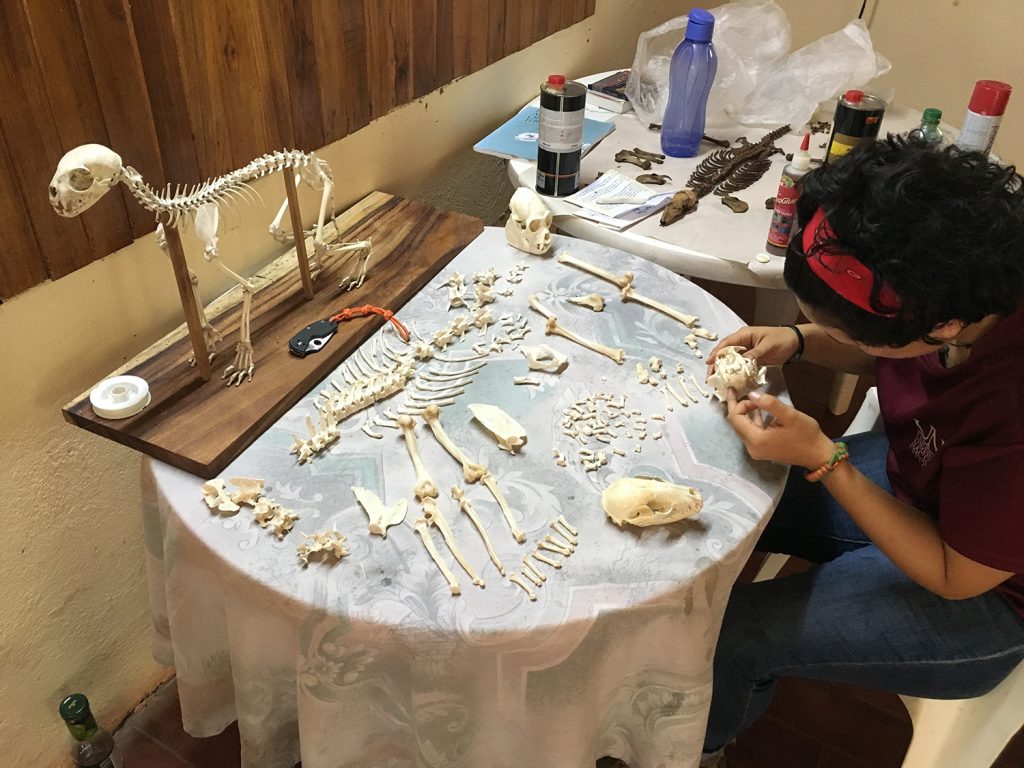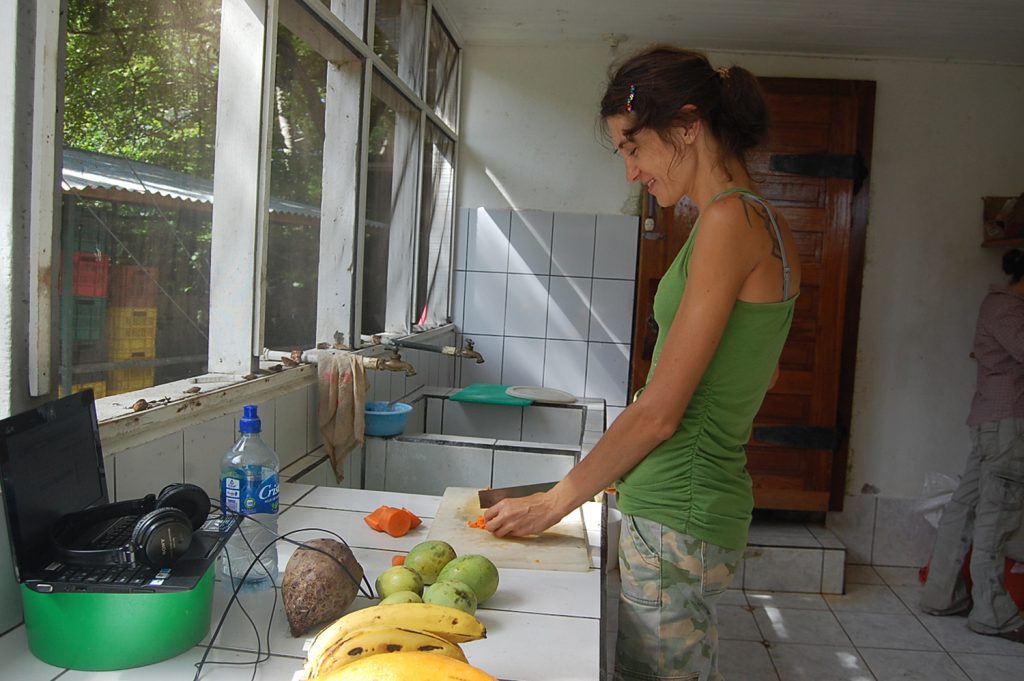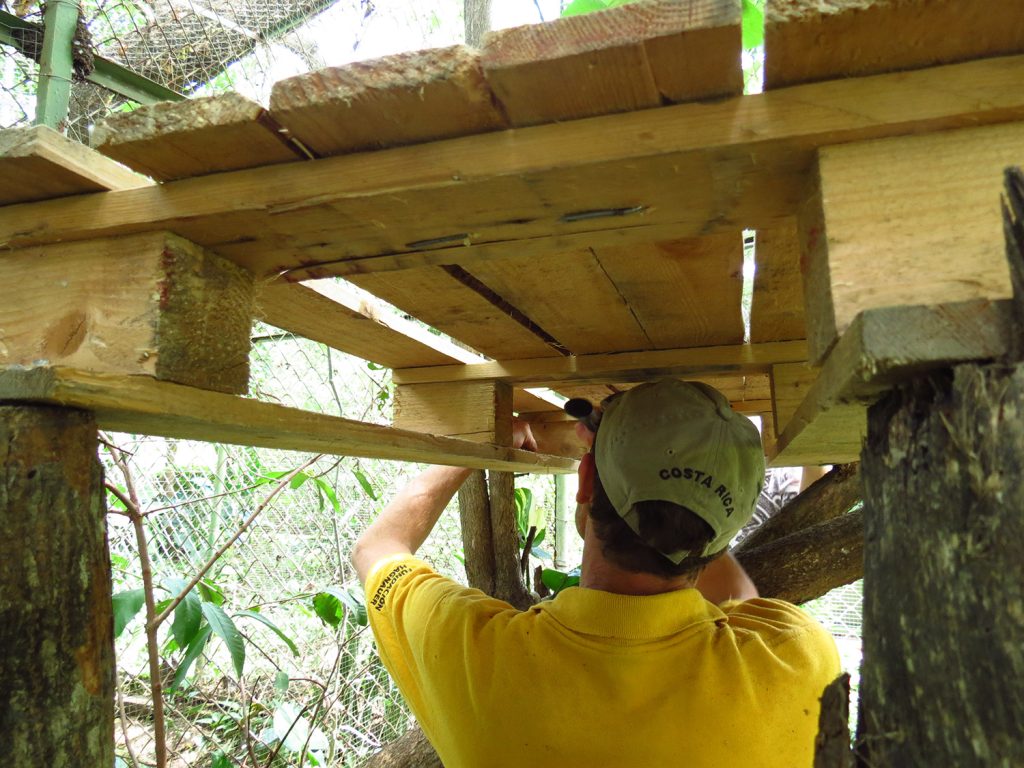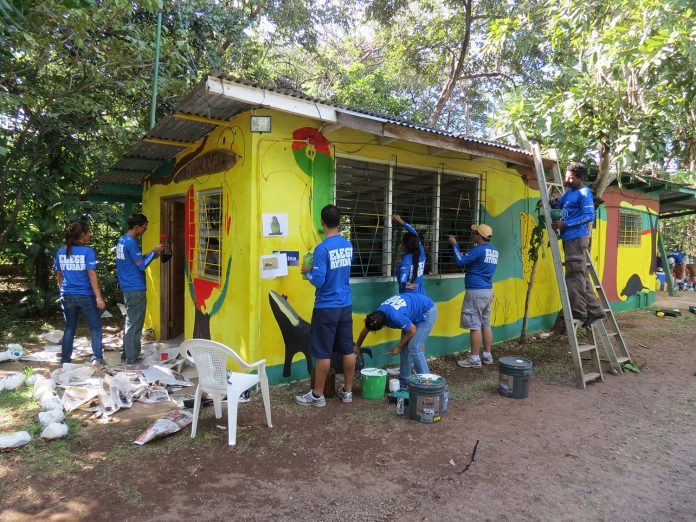Costa Rica draws travelers from around the world who are eager to see its globally renowned fauna—but many people want to go a step further and donate their time as volunteers to support wildlife rescue and rehabilitation efforts.
But with so many ethical questions at play in the field of animal welfare in wildlife facilities in Costa Rica, how can potential volunteers get informed in order to choose a destination where their volunteer activities will be well organized, enjoyable, and in compliance with Costa Rican wildlife laws?
Potential volunteers should heed much of the same advice that applies to travelers choosing a wildlife sanctuary to visit as a tourist, so check out our story from last week on that topic. It guides you through the basic provisions and categories of Costa Rica’s Wildlife Conservation Law; how to look for unsafe practices in an organization’s digital presence, and what to ask an organization in terms of its management plan and international certifications; and how to report violations.
However, there are also additional considerations regarding volunteering to support wildlife rescue efforts in Costa Rica. To learn more about these, we continued our conversations with two regent biologists: Esther Pomareda of Las Pumas Rescue Center and Sanctuary in Cañas, Guanacaste, and Marta Venegas of Rescate Wildlife Center – Zooave. These are two of the three Costa Rican wildlife sanctuaries that are currently accredited by the Global Federation of Wildlife Sanctuaries; the third is Kids Saving the Rainforest in Quepos).

Volunteers should not be in direct contact with animals
In last week’s piece, Esther and Marta explained why it’s so essential that animals’ interaction with humans be minimized for the safety of all concerned—especially with members of the public who are not fully trained. The same is true for volunteers.
Legitimate volunteer activities include environmental education for members of the public, infrastructure work, preparation of food for the animals, or enrichment. Enrichment might involve setting up special activities to encourage the animals’ physical and mental exercise, Marta says.
“In our case and at Las Pumas… there are regulations for volunteers that establish very explicitly that volunteers will not be in contact with animals,” Marta says.
“Volunteering is limited to activities in the sanctuary where there’s no direct contact with animals, because the wildlife… is attended to only by veterinary doctors,” says Esther. “They are the professionals.”
According to Marta, it’s important to understand that even sanctuary staff who interact directly with animals do so with measures in place to maintain wildlife in conditions as close to nature as possible. For example, staff avoid animals getting used to seeing humans’ bare hands: that’s why specialists handling sloths will generally use a gray blanket, or a black blanket for monkeys.

Ask for your volunteer plan
Without a doubt, a wildlife center receiving volunteers should be able to provide you with a written plan of activities, both Esther and Marta explain.
“If a [wildlife] management center wants to have a volunteer program, you have to write it out,” says Marta. She adds that this plan should include “the minimum stay and activities that are allowed.”
Rescate hosts a general volunteer and a specialized internship program for students of veterinary medicine or zoology, Marta adds.
Esther shared Las Pumas’ robust volunteer plan, which explains what activities volunteers will and will not be asked to do, eligibility requirements, and thorough lists of expectations for behavior, dress, and use of facilities.
Absence of a plan like this should be a red flag for potential volunteers.

Look for a balance between education and service
As Marta explained in last week’s piece, volunteer programs play an essential role at most wildlife centers. Rescue centers must, by law, be completely off limits to the public so that animals don’t become too used to humans; if they do, they might lose any chance of release into the wild, which is always the goal. Because of this, rescue centers have no clear way to generate revenue. That’s why wildlife sanctuaries, which display to the public rescue animals that can’t be re-released, often generate income through ticket sales that helps support a rescue center at the same facility.
Volunteer fees can be another important source of income. However, Esther says it’s important for sanctuaries to remain clear that education is the ultimate goal.
“We don’t approach volunteering like some other centers that may see volunteers as a financial boon,” says Esther. “We don’t see it like that.. We sell volunteering as an educational experience.”
As with any volunteer experience, you should expect to be provided with a clear, written plan for your service that shows you how your work will be benefiting the organization while also providing you with a chance to learn and grow—and you should see a match between your existing skills and the work you’ll be asked to do.

If the wildlife sanctuary where you serve as a volunteer doesn’t hold up its end of the bargain, particularly if it doesn’t comply with these requirements for animal safety, file a complaint. As we’ve reported, you can call 1192, the environmental complaint line run by the Environment Ministry (MINAE). You can also file a complaint online through MINAE’s Integrated System of Environmental Complaints, SITADA, here. You can do this anonymously, or you can provide your contact information, which obliges MINAE to follow up with you to explain what action was taken.
Don’t speak Spanish? El Colectivo 506 tried out the 1192 number to find out more about that issue: the response was immediate, and while the initial menu and live greeting are in Spanish, just ask for English and you’ll be transferred to the English speaker on staff. The SITADA site is also in Spanish, so if you can, ask for help from a Spanish speaker to understand the section headings. However, the 1192 operator assured us that a user can fill out the text fields entirely in English and again, an English speaker at MINAE will process the information.
(The SITADA headings read Type of Complaint, with a drop down menu from which, in this case, Biodiversidad/Vida Silvestre should be selected; Type of Infraction; Location Affected; Entity being Denounced; Address of the Infraction; and Description of the Infraction.)
Have you visited or volunteered at a wildlife sanctuary in Costa Rica? What other tips or observations do you have to share? We’d love to hear from you at [email protected]. In a country where wildlife facilities are as popular and varied as they are in Costa Rica, protecting wild animals who’ve been rescued is up to all of us.







